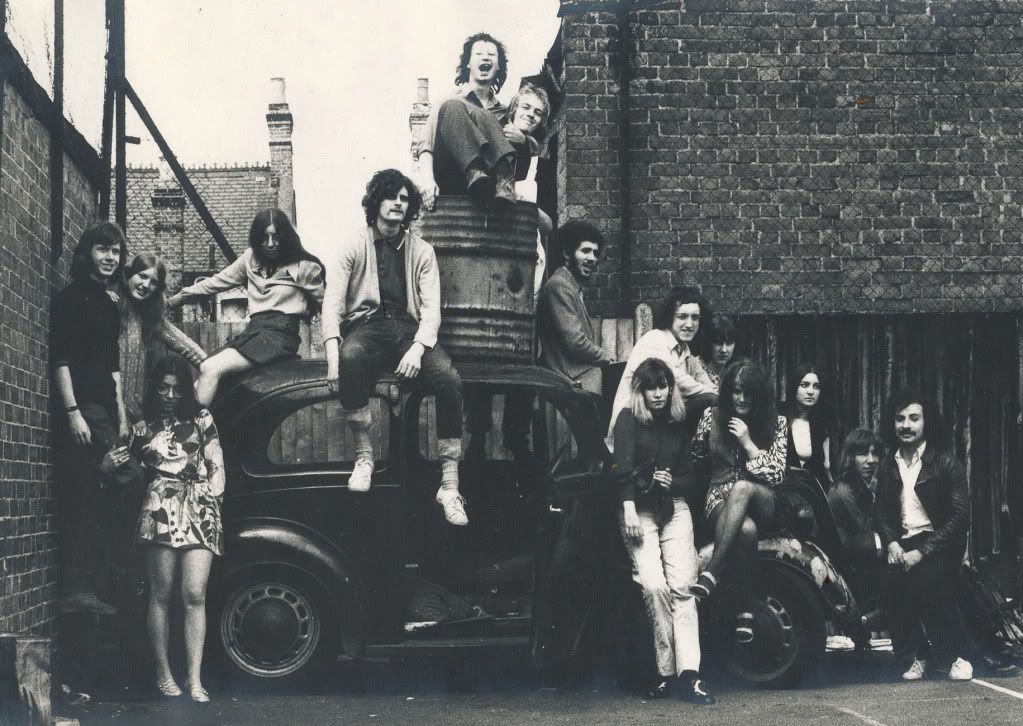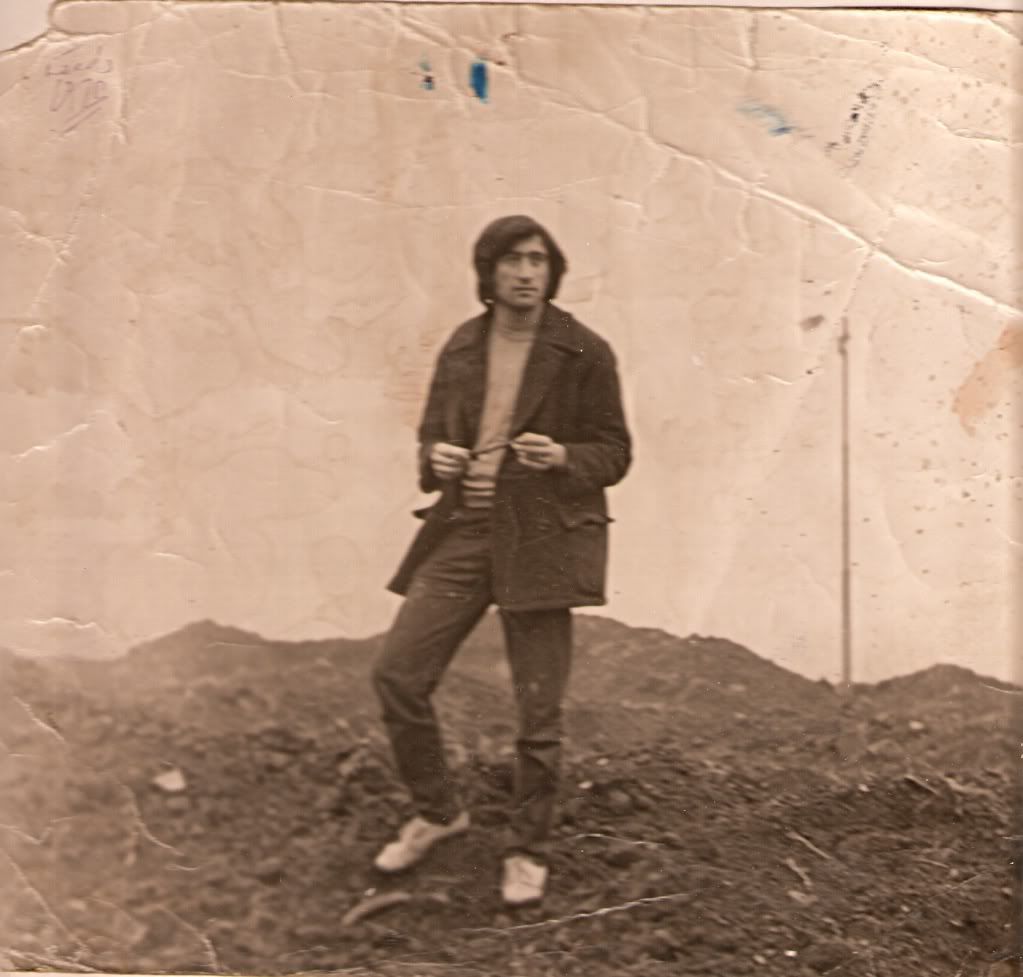
Harrow School of Art, 1969, by kind permission of Richard Plank, who is on the extreme left, back to the wall. I am not there, having left the previous year but knowing a number of people in the photo.
Interviews for Leeds were legendary and rather terrifying. The rumour was that they hardly looked at your portfolio. They were interested in you as a person. There was a story about one candidate being asked to criticise the portfolio of another. There was one about a candidate who said he enjoyed climbing and who was then asked to climb around the interview room without touching the ground. I suffered no great trial but when I was asked who my favourite artist was and I answered Cézanne, one of the interviewers cried out that he hated Cézanne. Whatever I did in response must have impressed them - I probably said something like, 'Well, you can't please everyone' - because they let me in.
The college had only just moved from the old Jacob Kramer to be part of the new Polytechnic. The building was exposed and windswept. An ex-school student of mine was to be swept off the stairs in one great gust of wind a few years later and blown to the ground where she was knocked senseless.
I had digs for the first year, out in Halton, near Templenewsam, sharing the house with some twenty or more others. It was in fact two neighbouring houses knocked together with fields at the back. The other students were mostly male but there were some four girls too. I was in a double room at first with a graphic artist called Derek who badly missed his home in Crawley. There was a snooker room in the cellar and a small bar. The landlord, Roger, an ex-teddy boy, liked me because I played the piano (there was an old upright there) and because I was polite. To everyone's amusement I went round shaking people's hands when we first met.
The poly was a good bus ride away. In the first week we were shown the studio, told to find a space and make it ours, then were instructed to go to Woolworths, to buy a small tin globe of the earth, and to do something interesting but unspecified with it. Having thought a couple of days I decided to give it away, but, just to show it was not abdication of responsibility, I cut a hole in the side of the globe and slipped a £1 note inside it. I offered it to a woman pushing a pram and she accepted it. I should say that £1 was worth rather more than it seems now, the rent for our handsome Victorian flat two years later being £2.75 a week.
When I reported what I had done, the tutor in charge, Robin Page congratulated me and was very surprised when I got some canvas and started painting.
Why are you painting? he asked me.
I told him I wanted to be a painter.
No, no, he argued. We're not interested in painters. What we want are beautiful people.
I had been a beautiful person giving away the globe, now I was just a painter. I don't think we spoke again.
It was interesting. Putting aside the sixties cliché about beautiful people, the argument seemed to be that action need not involve engagement with traditional materials, it needn't even involve the making of sculpture. It was not about making but being, and that sense of being had a kind of magical moral dimension. It was romantic conceptualism without the name: more magic than theory, and more circus than studio.
Where was my Harrow grounding in techniques? What was it worth in the court of magical acts, in a world of carnival and gesture?
It was the one and only project we were asked to undertake in the whole of the three years.

GS on the mound of earth at the back of Leeds Polytechnic (College of Art), 1969

2 comments:
Interesting. I presume Alf Parks and Dennis Harland had left by then? They taught Neil and he's been forever grateful!
They weren't there while I was. I am trying to recollect the names of the tutors I knew. I know there was George Hainsworth, Miles MacAlinden, Stass Paraskos, Ken Rowatt , Bruce (who was in a wheelchair), Glyn Hughes, the head Willy Tirr, and a woman who was also a singer, married to John Fox, Rather well known so I should remember. I don't think she ever talked to me. But there weren't many women. There are a good number of other people I don't immediately remember but their names will come to me. Was Neil familiar with any of those, Kathleen?
Post a Comment